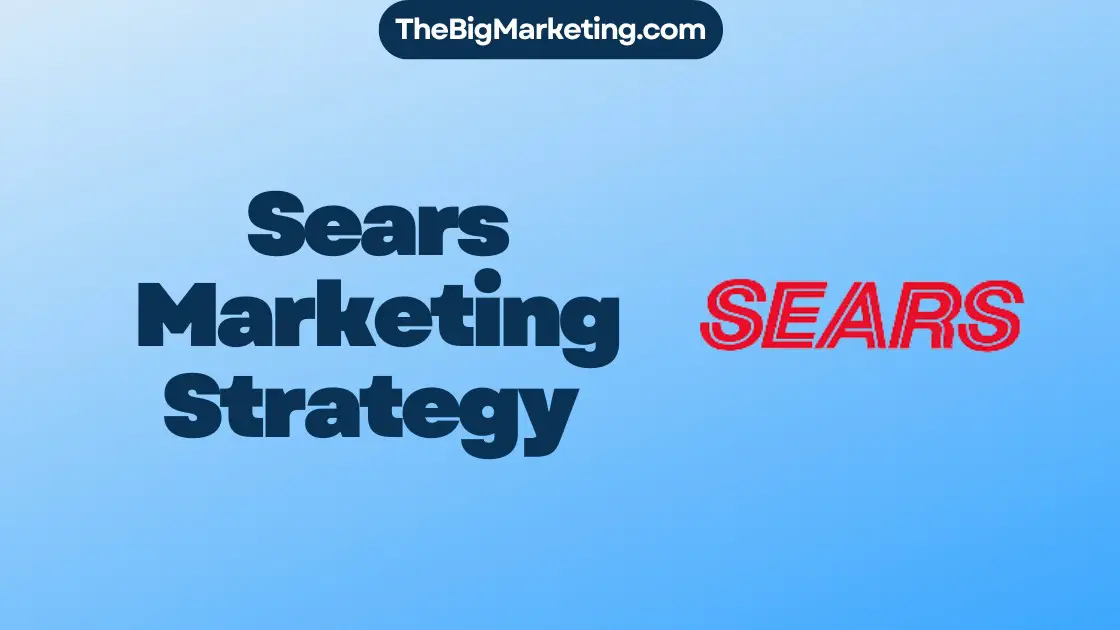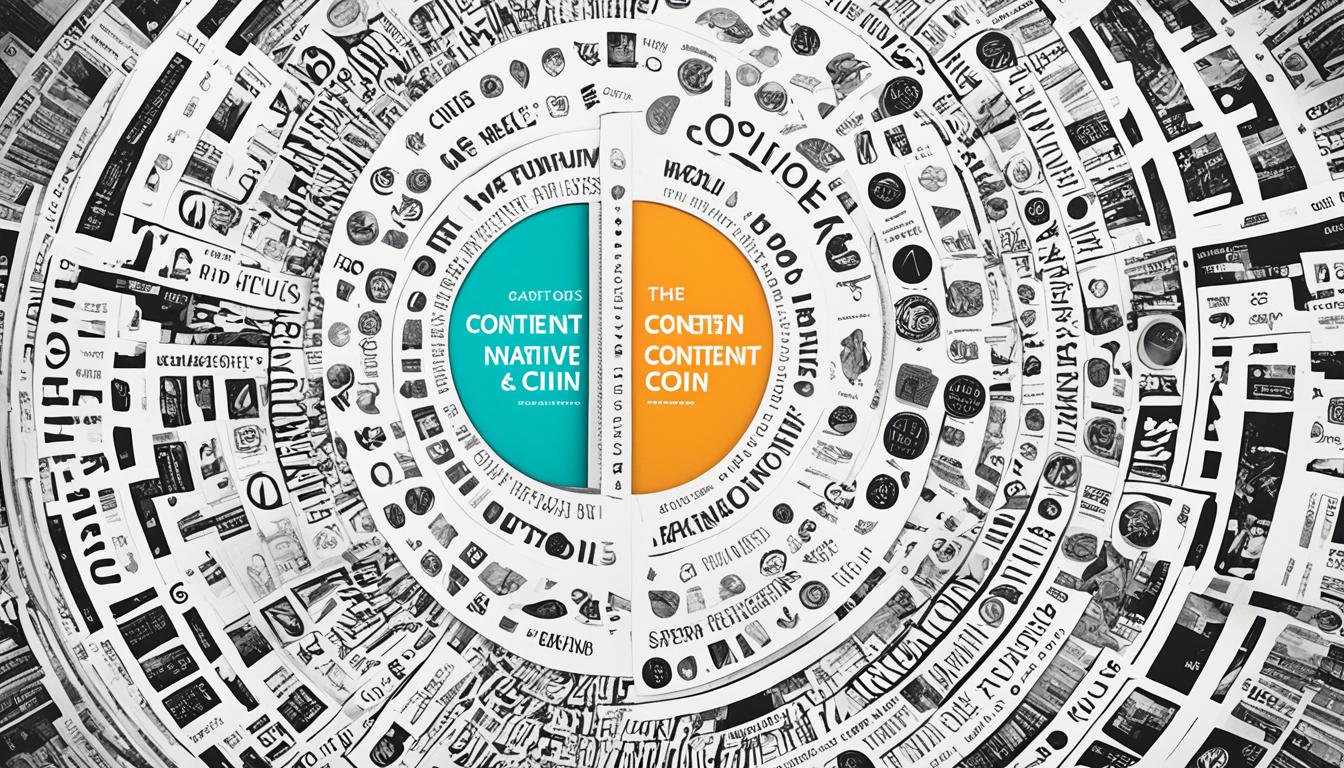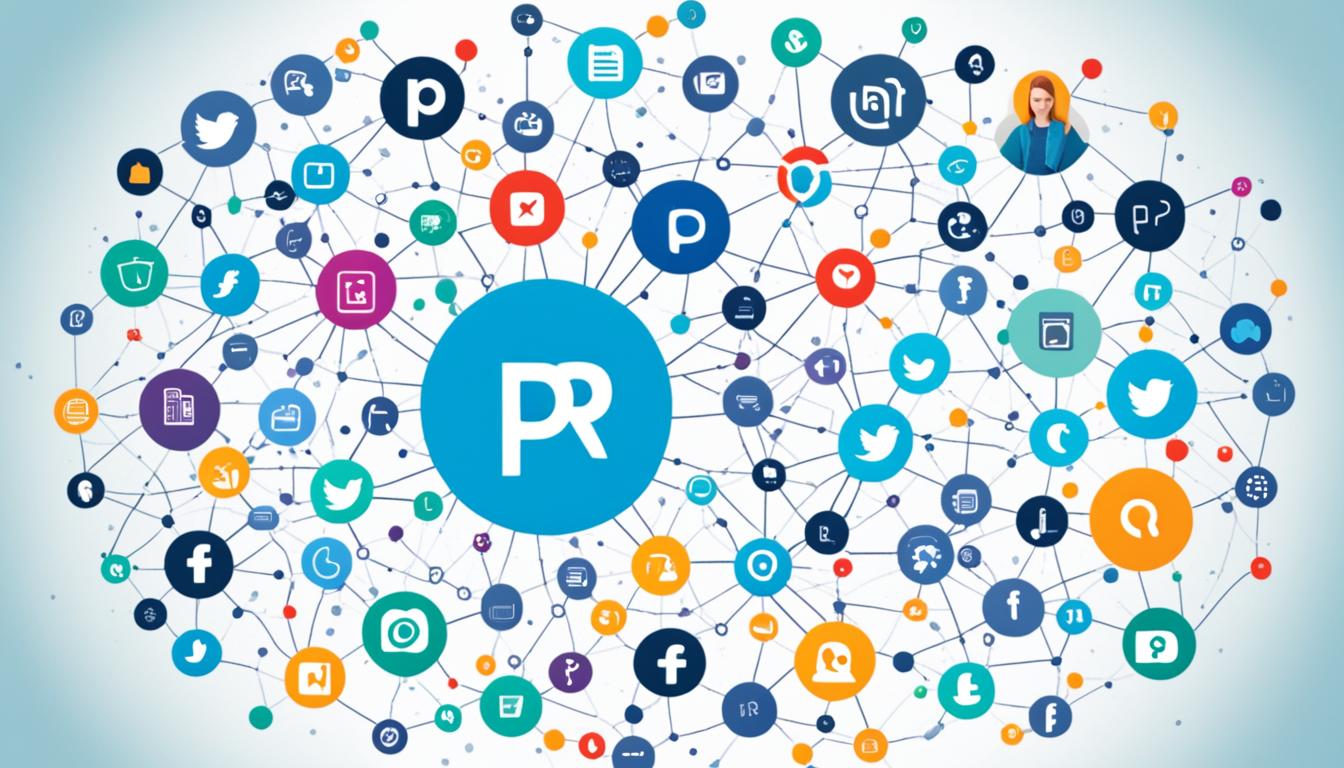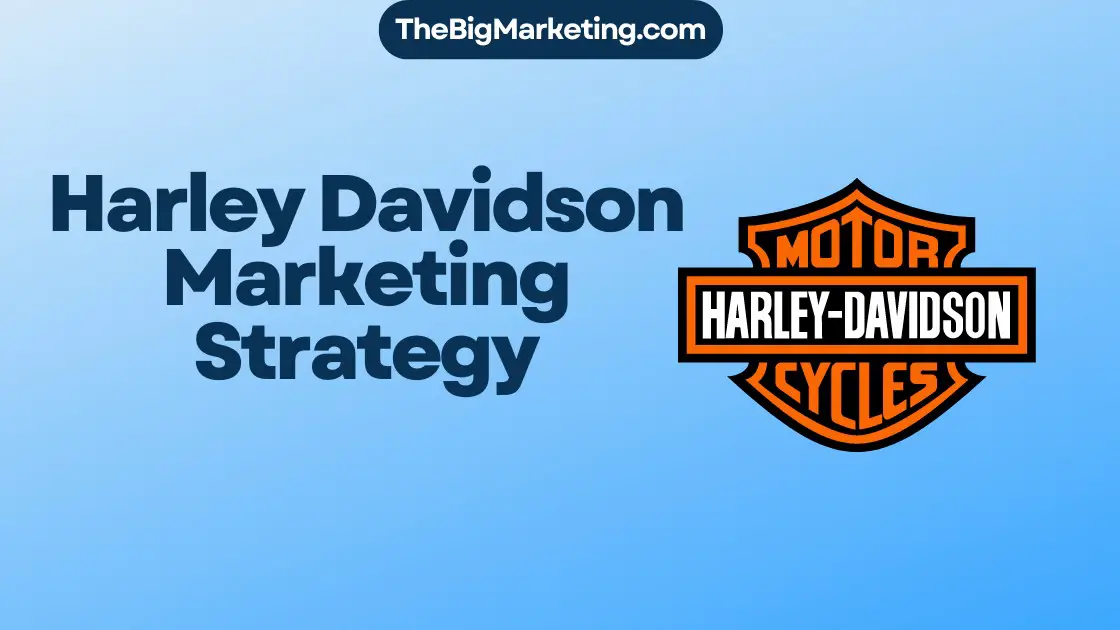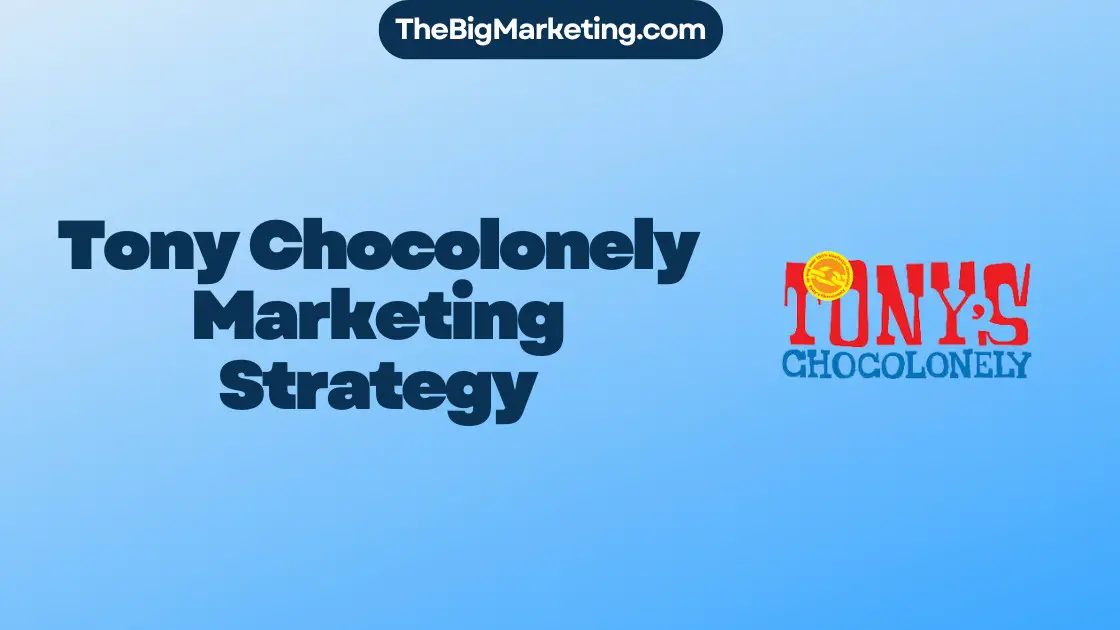The World Cup is not merely a soccer tournament, but a global phenomenon that captures the attention of billions of fans worldwide. For brands, it presents an unparalleled opportunity to engage with a diverse and passionate audience through strategic marketing strategies. In this case study, we will delve into the successful marketing tactics implemented during the 2022 FIFA World Cup and explore potential strategies for the upcoming 2024 edition.
Sports event promotions play a crucial role in harnessing the immense popularity and excitement surrounding the World Cup. Brands can leverage this global platform to reach a massive audience, boosting their visibility and enhancing their international branding campaigns. By examining the strategies employed during previous tournaments, we can uncover valuable insights and gain inspiration for crafting winning World Cup marketing strategies.
Key Takeaways:
- The World Cup offers brands a unique opportunity to engage with a global audience through effective marketing strategies.
- Sports event promotions and international branding campaigns play a crucial role in unlocking the potential of a winning World Cup Marketing Strategy.
- Examining successful marketing strategies employed during past tournaments can provide valuable insights for future World Cup campaigns.
- The World Cup captivates billions of fans worldwide, making it an ideal platform for brands to enhance their visibility and reach.
- By understanding the preferences and passions of football fans, brands can develop targeted strategies that resonate with the target audience.
Coca-Cola Marketing Strategy
Coca-Cola is renowned for its successful marketing strategies and has been a long-standing partner of the World Cup. The company’s marketing segmentation targets a wide range of customers, including young people, middle-aged adults, and older individuals. Coca-Cola understands the importance of appealing to diverse demographics and tailors its marketing efforts accordingly.
One of the key elements of Coca-Cola’s marketing strategy is its precise marketing segmentation. By identifying and understanding the unique needs and preferences of different consumer groups, Coca-Cola is able to develop targeted campaigns that resonate with each segment. This approach enables Coca-Cola to effectively engage with a wide audience and build brand loyalty.
Coca-Cola’s product strategy is another integral part of its marketing success. The company offers a diverse range of soft drinks, catering to various tastes and preferences. From classic Coca-Cola to Diet Coke, Coca-Cola Zero Sugar, and a variety of flavored beverages, Coca-Cola provides options that cater to the evolving consumer demands.
This product diversity is complemented by Coca-Cola’s global reach. The company sells its products globally in various sizes and packaging, ensuring accessibility to consumers in different markets. This distribution strategy allows Coca-Cola to deliver its beverages to consumers across the world, reinforcing its position as a global brand.
Furthermore, Coca-Cola’s marketing efforts during the World Cup encompass strategic partnerships and collaborations. The company leverages its association with the tournament to create engaging campaigns that capture the excitement of football fans. By aligning the brand with the passion and energy of the World Cup, Coca-Cola strengthens its connection with consumers on a global scale.
Coca-Cola’s Global Marketing
As a well-established brand, Coca-Cola is no stranger to the world of sponsorships, consistently partnering with major events such as the Olympic Games and, of course, the World Cup. In its relentless pursuit of a wide-reaching audience, Coca-Cola employs an array of global marketing strategies that span both traditional and digital channels.
One of Coca-Cola’s key strategies is harnessing the power of social media to engage with fans and generate excitement around the World Cup. Through strategic and creative social media campaigns, Coca-Cola has successfully built a sense of unity among fans from across the globe.
To illustrate the effectiveness of Coca-Cola’s global marketing efforts, we can examine its sponsorship and promotional activities during previous World Cup tournaments. By closely analyzing these practices, brands can gain valuable insights and inspiration for their own World Cup marketing strategies.
The Power of Sponsorship
Coca-Cola’s involvement in the World Cup goes beyond mere advertisements. The company actively seeks sponsorship opportunities, allowing it to align itself closely with the excitement and passion surrounding the tournament. By sponsoring prominent teams or becoming an official partner of the World Cup itself, Coca-Cola amplifies its brand visibility and establishes a strong presence in the minds of football fans worldwide.
These partnerships provide Coca-Cola with unique opportunities to connect with fans on a deeper level through a variety of activities, including exclusive competitions, fan events, and player endorsements. By tapping into the emotional connection fans have with the tournament, Coca-Cola builds loyalty and creates lasting brand memories.
Creating Buzz Through Social Media
Social media is an essential component of Coca-Cola’s global marketing strategy during the World Cup. By leveraging popular platforms like Facebook, Twitter, and Instagram, the brand engages with fans in real-time, fostering a sense of community and excitement.
Through social media, Coca-Cola shares engaging and shareable content, including behind-the-scenes footage, fan testimonials, and interactive challenges. By encouraging user-generated content, Coca-Cola transforms World Cup enthusiasts into brand advocates, amplifying its reach and influence throughout the tournament and beyond.
The image above highlights Coca-Cola’s successful utilization of social media platforms to enhance its World Cup marketing efforts. Through captivating visuals and well-crafted messaging, Coca-Cola effectively captures the attention of its target audience, maximizing engagement and brand exposure.
As brands seek inspiration for their World Cup marketing strategies, Coca-Cola’s global marketing approach serves as a valuable case study. By combining strategic sponsorships with effective social media strategies, brands can enhance their presence and connect with fans on a global scale, ensuring a successful and impactful World Cup marketing campaign.
Engaging the Global Audience
The FIFA World Cup captivates a massive global audience, making it a prime opportunity for brands to connect with consumers from all corners of the world. With an estimated 3.572 billion viewership during the 2018 World Cup, the tournament offers unparalleled visibility and engagement potential for marketing campaigns.
To effectively engage this global audience, brands must understand the preferences and passions of football fans. The World Cup evokes a unique sense of excitement, passion, and national pride among fans, creating an ideal platform for brands to establish emotional connections and create memorable experiences.
Successful World Cup marketing campaigns have leveraged fan engagement as a key strategy. By fostering a sense of community and encouraging fan participation, brands can generate buzz and cultivate brand loyalty. Interactive campaigns, contests, and user-generated content are excellent ways to involve fans and tap into their enthusiasm for the tournament.
Furthermore, brands can utilize social media platforms to amplify their reach and engage with fans on a global scale. By crafting relevant and engaging content, integrating World Cup viewership data, and leveraging popular hashtags, brands can spark conversations and create a sense of unity among fans.
One example of effective global audience engagement during the World Cup is Adidas’ “Tango Squad FC” campaign. This campaign, targeted at young football enthusiasts worldwide, invited fans to showcase their skills and creativity through user-generated content. Adidas then featured the best submissions, providing an opportunity for aspiring footballers to gain recognition and be part of a global football community. This campaign successfully tapped into the passion and aspirations of the global audience, fostering deep engagement and association with the Adidas brand.
Innovative Fan Engagement Strategies
Brands looking to engage the global World Cup audience should consider the following strategies:
- Creating interactive digital experiences that allow fans to participate actively.
- Running contests and sweepstakes with World Cup-related prizes to generate excitement.
- Encouraging user-generated content and showcasing the best submissions to amplify fan voices.
- Partnering with influencers, football legends, or national teams to enhance credibility and reach.
- Organizing watch parties or fan events to create offline engagement opportunities.
To illustrate the effectiveness of these strategies, let’s examine a hypothetical fan engagement campaign by Nike for the upcoming World Cup. Nike could organize a global football skills competition, allowing fans to submit videos showcasing their unique skills. The best submissions would be featured on Nike’s social media platforms and website, generating excitement and cultivating a sense of camaraderie among fans. This campaign would leverage fan participation, user-generated content, and social media amplification to create a captivating and engaging experience for the global World Cup audience.
| World Cup | Viewership |
|---|---|
| 2018 | 3.572 billion |
| 2014 | 3.2 billion |
| 2010 | 3.2 billion |
Sponsorship Opportunities
The World Cup offers a multitude of sponsorship opportunities for brands looking to enhance their visibility and connect with a global audience. By partnering with the tournament or individual teams, brands can leverage the excitement and passion surrounding this prestigious event to promote their products or services. Sponsorship provides a powerful platform for brand exposure, allowing companies to reach millions of football fans around the world. It is a strategic investment that can generate significant returns and create long-lasting brand partnerships.
During the World Cup, brands can explore various sponsorship options, ranging from official partnerships with the tournament itself to collaborations with specific teams or players. These partnerships offer unique advertising opportunities that extend beyond the tournament’s duration, allowing brands to engage with fans throughout the football season. To maximize the impact of sponsorship, brands must carefully align their values and target audience with the World Cup’s core themes of teamwork, competition, and sportsmanship.
Successful brand partnerships during the World Cup have involved integrated marketing campaigns that leverage multiple channels for maximum reach and engagement. By combining traditional advertising methods with digital mediums, brands can create a comprehensive brand experience for fans. Social media platforms provide an excellent avenue for sponsor visibility, with campaigns that encourage user-generated content and foster fan interaction.
Sponsorship opportunities also extend beyond traditional advertising, with brands having the chance to collaborate on various on-site activations, such as interactive fan zones, branded merchandise, and exclusive experiences. These interactive elements not only promote brand awareness but also create memorable and immersive experiences for fans.
By aligning their brand with the World Cup, companies can tap into the passion and enthusiasm of football fans and strengthen their global presence. Successful sponsorships have shown that investment in World Cup partnerships goes beyond immediate financial benefits, driving long-term brand recognition and loyalty.
Case Study: Adidas and the World Cup
Adidas, a renowned sportswear brand, has consistently capitalized on sponsorship opportunities during the World Cup. Through its collaboration with the tournament and key teams, Adidas has established itself as a dominant presence in football culture. The brand’s partnership with the World Cup goes beyond merely showcasing its products; it actively engages fans through immersive activations and unique experiences.
One notable example is Adidas’ creation of the “Brazuca,” the official match ball for the 2014 FIFA World Cup. This innovative product not only generated excitement among football enthusiasts but also served as a powerful branding tool for Adidas. The brand’s commitment to pushing the boundaries of technology and design in football equipment has solidified its position as a leader in the industry.
In addition to its sponsorship of the tournament itself, Adidas has formed strong partnerships with individual teams and players, further amplifying its brand presence during the World Cup. These partnerships have enabled Adidas to create captivating advertising campaigns and establish emotional connections with fans around the world. By aligning with renowned football icons, the brand has successfully leveraged the World Cup platform to elevate its global reputation and drive sales.
Adidas’ success in utilizing sponsorship opportunities during the World Cup serves as a testament to the immense value and potential for brand partnerships in this premier sporting event. By carefully selecting partnerships, creating engaging experiences, and fostering brand loyalty, companies can unlock substantial advertising opportunities and connect with a passionate global audience.
Digital Marketing Tactics
In today’s digital age, digital marketing has become an essential strategy for brands to promote themselves during the World Cup. Leveraging the power of social media platforms and video marketing, brands can effectively engage with fans, share captivating content, and create a sense of community. Let’s explore some successful digital marketing tactics and strategies that have resonated with the target audience, driving brand visibility and audience engagement.
The Power of Social Media Strategies
Social media platforms such as Facebook, Twitter, and Instagram offer a gateway for brands to connect with fans on a global scale. By utilizing a comprehensive social media strategy, brands can capitalize on the World Cup’s widespread popularity and engage with their target audience in real-time.
For instance, brands can create dedicated hashtags to encourage user-generated content and interaction. Running contests and giveaways through social media platforms incentivize fans to actively participate, fostering a deeper sense of involvement. Additionally, partnering with popular influencers or football-related accounts can amplify reach and enhance brand visibility.
Video Marketing: Telling Compelling Stories
Video marketing is a powerful tool that allows brands to tell compelling stories and showcase their association with the World Cup. By creating engaging and visually appealing video content, brands can captivate audiences and evoke emotions that resonate with viewers.
From heartwarming stories of fans’ experiences to behind-the-scenes footage of teams and players, video marketing provides a dynamic medium to connect with fans on a deeper level. Brands can leverage this medium to demonstrate their genuine passion for football and create a lasting impression in the minds of viewers.
Engaging and Interactive Content
During the World Cup, audiences crave engaging and interactive experiences. Brands can leverage this by creating captivating content that encourages audience participation and interaction.
One effective strategy is to develop interactive quizzes or polls related to football trivia, World Cup predictions, or favorite moments. These activities not only entertain fans but also create a sense of community and friendly competition among followers.
User-generated content campaigns, such as photo or video contests, enable fans to showcase their support for their favorite teams or brands. This not only fosters a sense of pride and belonging but also generates valuable user-generated content that can be shared across social media platforms.
Data-driven Insights for Optimization
As digital marketing provides a wealth of data, brands can leverage analytics to gain important insights into the effectiveness of their strategies. By analyzing metrics such as engagement rates, reach, and conversions, brands can identify areas for improvement and optimize their digital marketing tactics accordingly.
It is essential to monitor and measure the performance of social media campaigns, video content, and other digital marketing initiatives. Through continuous monitoring and data-driven decision-making, brands can refine their strategies to ensure maximum impact and engagement with the target audience.
By harnessing the power of digital marketing, brands can establish a strong online presence, engage with fans, and create lasting impressions during the World Cup. As technology continues to evolve, it is crucial for brands to stay abreast of the latest trends and leverage innovative digital marketing tactics to stand out in the crowded digital landscape.
Cross-Cultural Partnerships
The World Cup presents a unique opportunity for brands to form cross-cultural partnerships and collaborate with local influencers, celebrities, or organizations. By leveraging the diversity of cultures and nationalities that the tournament brings together, brands can enhance their appeal and connect with specific target markets on an international scale.
Developing Cultural Sensitivity
Cultural sensitivity and understanding are essential when developing successful cross-cultural partnerships during the World Cup. Brands must take into consideration the cultural nuances and preferences of different regions to ensure their marketing efforts are well-received and resonate with the target audience.
Case Studies of Effective Collaborations
Let’s explore some case studies of brands that have effectively navigated the complexities of cross-cultural collaborations during past World Cups:
| Brand | Partnership Details | Outcome |
|---|---|---|
| Coca-Cola | Collaborated with local artists and musicians to create region-specific campaigns that celebrated the unique culture of each host country | Increased brand visibility, engagement, and market share in the target regions |
| Nike | Teamed up with renowned football players from different countries to showcase the brand’s global reach and appeal | Strengthened brand identity, captured the attention of diverse fan bases, and increased sales |
| Adidas | Partnered with local NGOs to launch community initiatives that focused on social and environmental causes | Enhanced brand reputation, connected with local communities, and generated positive media coverage |
These case studies demonstrate the value of fostering cross-cultural partnerships that align with the values and interests of different regions, resulting in increased brand visibility, engagement, and market share.
By leveraging cross-cultural collaborations, brands can effectively navigate the complexities of diverse markets, establish meaningful connections with target audiences, and create a lasting impact during the World Cup.
Fan Engagement Strategies
Engaging fans is a crucial element of a successful World Cup marketing strategy. To create a sense of community and encourage fan participation, brands can leverage interactive campaigns, contests, and user-generated content.
Interactive campaigns provide fans with immersive experiences that go beyond traditional advertising. They can include interactive ads, quizzes, games, and challenges that allow fans to actively engage with the brand and the tournament. These campaigns not only capture fans’ attention but also generate excitement and anticipation for the World Cup.
Contests are another effective way to engage fans during the tournament. Brands can organize various contests, such as predicting match outcomes, creating memorable slogans, or showcasing their support for their favorite teams. By offering attractive prizes and incentives, brands can motivate fans to actively participate and share their entries on social media platforms, creating a buzz around the brand and the event.
User-generated content is a powerful tool to foster fan engagement. Brands can encourage fans to share their World Cup experiences, photos, videos, and stories on social media using dedicated hashtags, creating a sense of belonging and camaraderie among fans. This content not only amplifies the brand’s reach but also allows fans to express their passion and become an integral part of the World Cup conversation.
Examples of successful fan engagement strategies:
- Adidas: During the 2018 FIFA World Cup, Adidas launched an interactive campaign called “Create the Answer.” Fans were invited to design and submit their own custom jerseys, with winning designs manufactured and worn by players during the tournament. This campaign not only engaged fans creatively but also generated significant social media buzz, showcasing the brand’s commitment to fan participation and personalization.
- Coca-Cola: As a long-standing partner of the World Cup, Coca-Cola has implemented various fan engagement strategies over the years. One notable example is the “Share a Coke” campaign, where fans were encouraged to find their names or the names of their favorite players on Coca-Cola bottles. This personalized approach created a sense of excitement and connection with the brand and the tournament, leading to increased fan engagement and loyalty.
- Nike: Nike’s “Write the Future” campaign during the 2010 FIFA World Cup stands as a prime example of user-generated content. Fans were invited to submit their own stories and predictions for the tournament, which were showcased on Nike’s website and social media channels. This campaign not only amplified fan engagement but also allowed fans to become part of the World Cup narrative.
By implementing innovative fan engagement strategies like interactive campaigns, contests, and user-generated content, brands can establish a deeper connection with fans, generate buzz, and maximize their presence during the World Cup.
Table: Successful Fan Engagement Strategies during the World Cup
| Brands | Strategy | Outcome |
|---|---|---|
| Adidas | “Create the Answer” campaign | Engaged fans creatively and generated social media buzz |
| Coca-Cola | “Share a Coke” campaign | Personalized approach leading to increased fan engagement and loyalty |
| Nike | “Write the Future” campaign | User-generated content amplifying fan engagement and participation |
International Branding Campaigns
The World Cup provides a unique platform for brands to showcase their international branding campaigns. With the tournament attracting a multicultural audience, brands can create campaigns that resonate with different cultures and languages. By tailoring their messaging and visuals to specific regions, brands can establish a global presence and effectively engage with diverse audiences.
Successful international branding campaigns during previous World Cups have demonstrated the importance of understanding cultural nuances and preferences. Brands that have embraced the multicultural market have been able to maximize their reach and connect with consumers on a deeper level. By effectively incorporating elements of cultural relevance and diversity into their campaigns, brands can leave a lasting impression that resonates with people from various backgrounds.
One of the key strategies for international branding during the World Cup is to adapt marketing materials to the local language and culture. This includes translating slogans, taglines, and campaign messages to ensure they convey the intended meaning and resonate with the target audience. Visual elements such as colors, imagery, and symbols should also be carefully selected to align with cultural preferences and avoid any potential misunderstandings.
Maximizing Reach in the Multicultural Market
In order to maximize their reach in the multicultural market, brands should consider partnering with local influencers, celebrities, or organizations. These partnerships can help to bridge cultural gaps and build credibility and trust among different communities. By leveraging the influence and reach of these local figures, brands can amplify their messaging and establish a strong presence in specific regions.
Another effective strategy for international branding during the World Cup is to create content that reflects the diversity of the audience. This can include featuring diverse individuals in advertisements, showcasing different cultural traditions and celebrations, and incorporating themes of unity and inclusivity. By mirroring the audience’s own experiences and values, brands can foster a sense of connection and authenticity.
Furthermore, leveraging digital platforms and social media channels is crucial for reaching a global audience during the World Cup. Brands should develop targeted digital marketing campaigns that are tailored to different regions and cultural contexts. This can involve creating localized content, engaging with fans in their native languages, and utilizing social media influencers who are popular within specific cultural communities.
Ultimately, international branding during the World Cup is a powerful tool for brands to expand their global reach and connect with the multicultural market. By understanding and respecting diverse cultures, tailoring messaging and visuals accordingly, and leveraging local partnerships and digital platforms, brands can create compelling campaigns that resonate with audiences worldwide.
Global Audience Engagement
To capture the attention of a global audience during the World Cup, brands must go beyond mere marketing tactics and focus on creating memorable experiences and forging emotional connections. This requires leveraging the excitement and passion of the tournament to engage fans on a deeper level and leave a lasting impression.
One of the strategies to create impactful and memorable brand experiences is through immersive activations. By providing fans with interactive and sensory-rich experiences, brands can create a sense of excitement and engagement. This could include setting up fan zones equipped with giant screens, live music performances, and fun activities that celebrate the spirit of the World Cup.
Another effective approach is to tap into the emotional aspect of the game. Football evokes strong emotions among fans, and brands can align their messaging and storytelling with these emotions to create a genuine connection. Through heartwarming and inspiring campaigns, brands can touch the hearts of the global audience and build a lasting bond.
Furthermore, brands can leverage technology to enhance the fan experience. Augmented reality and virtual reality can transport fans into the thrilling world of the World Cup, allowing them to feel as if they are part of the action. Brands can also use personalized and interactive content on social media platforms to make fans feel truly involved and valued.
Moreover, collaboration with influential football figures can add credibility and amplify brand reach. By partnering with popular football players, coaches, or commentators, brands can tap into their global fan base and leverage their influence to connect with a wider audience. These collaborations can range from endorsement deals to co-creating content that resonates with fans.
In conclusion, engaging a global audience during the World Cup requires brands to prioritize memorable experiences and emotional connections. By immersing fans in interactive experiences, tapping into football’s emotional power, leveraging technology, and collaborating with influential figures, brands can create a lasting impact and forge strong connections with the diverse global audience.
Conclusion
The World Cup presents an exceptional platform for brands to implement effective marketing strategies and elevate their global branding efforts. By understanding the preferences and passions of football fans, brands can tailor their campaigns to engage and resonate with the target audience. Through sponsorship opportunities, digital marketing tactics, cross-cultural partnerships, and fan engagement strategies, brands can create a lasting impact and maximize their audience engagement during the World Cup.
With careful planning and execution, a winning World Cup marketing strategy can unlock the potential for brand growth and recognition on a global scale. By leveraging the excitement and passion surrounding the tournament, brands can establish emotional connections and create memorable experiences for the global audience. By capitalizing on this prime opportunity, brands can enhance their global branding efforts and expand their reach in the multicultural market.
The World Cup is not just a sporting event; it is a powerful platform for brands to connect with a diverse global audience. By developing an effective World Cup marketing strategy, brands can forge long-lasting relationships and build brand loyalty. By embracing the spirit of the World Cup and tailoring their campaigns to engage and resonate with fans, brands can elevate their presence and make a lasting impact in the world of international sports marketing.

